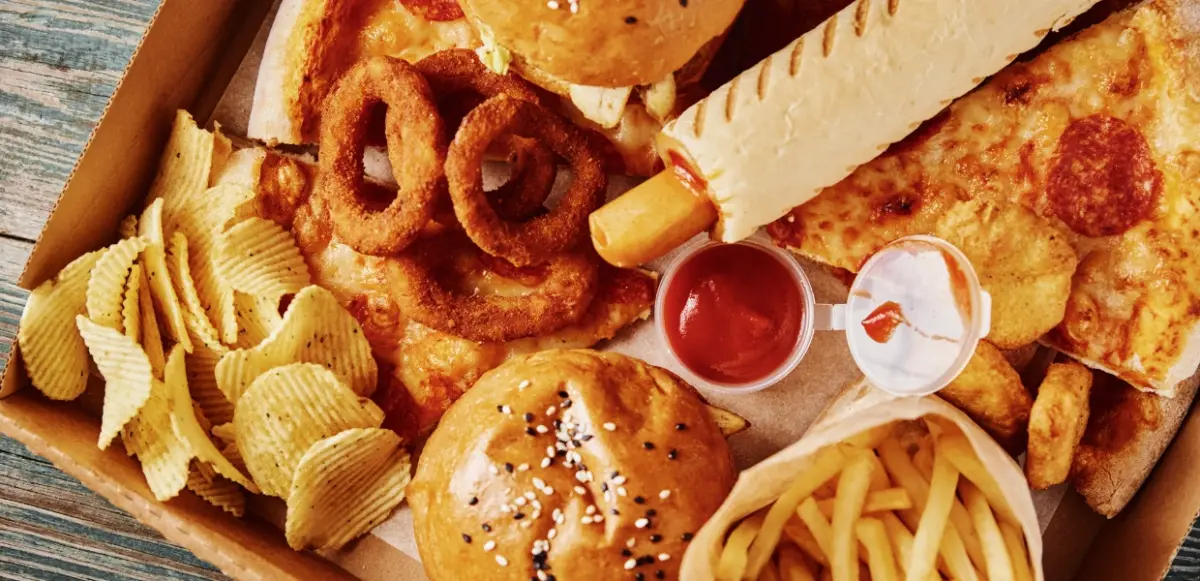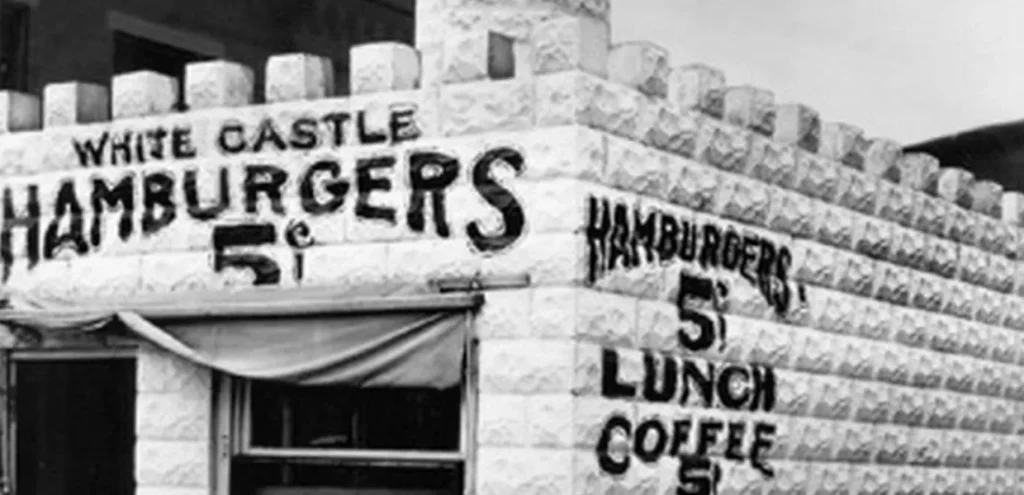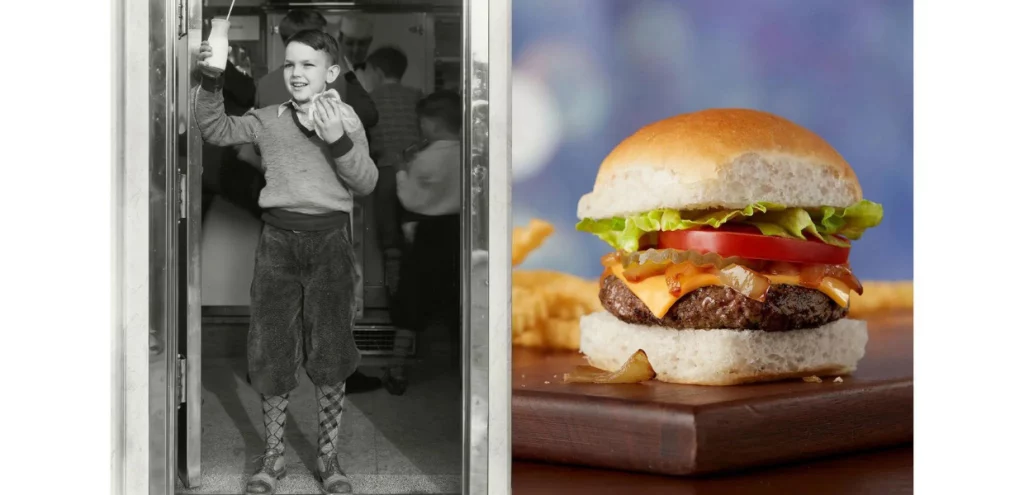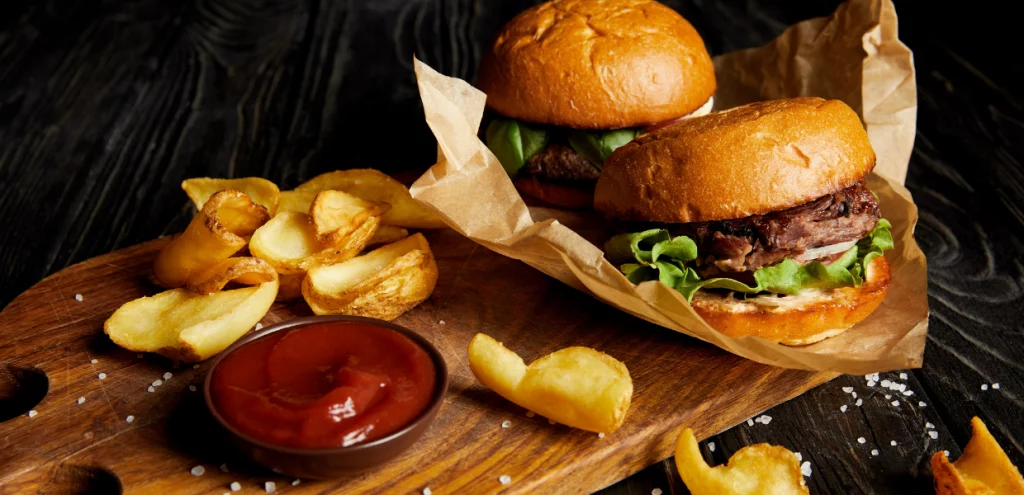All Articles
What Is a Fast-Food Restaurant

Many types of restaurants exist, but fast-food restaurants are perhaps the most popular. Some of the characteristics of a fast-food restaurant are well-known, but few people know other interesting facts about these establishments. Whether you are considering opening a restaurant and a fast-food establishment is one of your options, or you are simply a curious foodie wanting to know more about fast-food restaurants, this article will provide important information to help you better understand these popular dining spots. Read until the end of the article to discover how a fast-food restaurant could be defined, its history, main characteristics and benefits, and the essential technology used in this type of restaurant.
How Is a Fast-Food Restaurant Defined
A fast-food restaurant, also known as a quick-service restaurant (QSR), is designed to offer quick, affordable meals with minimal table service. These establishments serve high-carbohydrate foods like burgers, fries, pizza, fried chicken, and sandwiches. Their focus on speed, efficiency, convenience, and consistency has made them a staple in the dining industry, catering to customers seeking a quick and convenient dining experience.
Here are some examples of popular fast-food restaurants:
- KFC
- McDonald’s
- Burger King
- Wendy’s
- Taco Bell
- Subway
History of Fast-Food Restaurants
Some historians relate the history of fast-food restaurants to the first self-service restaurant, “Stollwerck-Automatenrestaurant,” which opened in 1896 in Berlin, and to the self-serve food establishments known as Automats that were very popular in the 20th century. However, the fast-food restaurant as we know it today began in 1921 in Wichita, Kansas. White Castle was the first company to introduce the concept of fast food in the United States.

Founded by Billy Ingram and Walter Anderson, White Castle introduced a different approach to dining: affordable, quickly served food delivered with consistency and efficiency. This model was revolutionary for its time, setting the stage for the modern fast-food industry.
At the heart of White Castle’s innovation was its signature item: the small, square-shaped hamburger known as a slider. Originally priced at just five cents, these sliders were deliberately made affordable to ensure accessibility for a broad range of customers, especially during the economic hardships of the early 20th century. This pricing strategy attracted customers and established a loyal following that appreciated the value and convenience offered by White Castle.

Beyond their business practices, White Castle left an indelible mark on popular culture. The distinctive architecture of its restaurants, characterized by white-painted exteriors and castle-like turrets, became iconic symbols synonymous with the brand. This visual identity helped White Castle stand out and contributed to its widespread recognition and appeal.
White Castle’s success did more than establish a thriving business—it shaped the trajectory of the fast-food industry. They were the first to standardize food production, appearance, and operation. White Castle’s model set the stage for the development of the modern fast-food industry.
Characteristics of Fast-Food Restaurants
A few characteristic elements of fast food restaurants have already been mentioned, but there are many more. Here is a comprehensive list to help you understand the defining aspects of a fast-food restaurant:
- Speed and Efficiency: Fast-food restaurants are designed to provide quick service, catering to busy customers who need to grab a meal on the go. This focus on speed ensures that orders are prepared and served promptly, minimizing waiting times.
- Convenience: Located in easily accessible areas such as busy streets, shopping malls, and near schools or offices. Fast-food restaurants offer convenience to customers looking for a quick bite without getting out of their way.
- Consistency: Fast-food chains prioritize maintaining consistency across all locations. From food quality to service, they deliver the same unique experience regardless of the location, increasing customer loyalty and trust.
- Affordability: One of the main characteristics of fast food is its affordability compared to meals at full-service restaurants. With cost-effective pricing, fast food remains accessible to a wide range of people.
- Self-Service: Customers are directly involved in the dining experience, from placing their orders at the counter or kiosk to picking up their food once it’s ready. This self-service model contributes to the efficiency and speed of operations.
- Limited Menu: Fast-food menus are focused on popular items that can be prepared quickly and consistently. This typically includes classics like burgers, fries, sandwiches, pizzas, and fried chicken, ensuring food preparation and service efficiency.

- Minimal Seating: Interiors of fast-food establishments typically feature a limited number of tables, often aimed towards takeout and quick dining. This setup reflects the restaurant’s focus on serving customers quickly, with minimal space dedicated to dine-in experiences.
- Drive-Thru Service: Many fast-food restaurants offer drive-thru lanes, allowing customers to place and receive their orders without leaving their vehicles. This service option makes it easier for customers who want to get their food quickly.
- Extended Hours: Fast-food restaurants often operate extended hours, remaining open late or even 24/7. This option makes sure that customers can satisfy their cravings at any time of day.
- Casual Atmosphere: Fast-food restaurants have a casual atmosphere characterized by bright lighting, vibrant colors, and simple, functional seating arrangements. This atmosphere is set up to handle a lot of customers quickly.
Benefits of Fast-Food Restaurants
Opening a fast-food restaurant offers unique advantages rarely found in other dining establishments. This section explores some specific benefits that make fast-food restaurants compelling, especially for entrepreneurs.
- Cheaper Food Costs: Fast-food restaurants prioritize consistency, speed, and value over high-quality ingredients, resulting in a substantial profit margin of approximately 70%. Keeping recipes and processes consistent keeps food costs low while keeping menu items affordable.
- Easy to Find Talent: Easy food preparation and service tasks make hiring and training staff easier, attracting a wider range of applicants and ensuring consistent service quality.
- Customer Convenience: Fast-food menu items provide quick and affordable meals, catering to busy individuals with convenient locations and efficient service that ensures accessibility.
- Lower Rent: Operating in smaller physical spaces than other dining formats helps fast-food restaurants minimize rental expenses, strategically locating in high-traffic areas to optimize visibility and foot traffic.
- Lower Labor Costs: Fast-food’s efficient service model reduces the need for large staff compared to full-service restaurants, helping to cut labor costs and improve overall efficiency.
Essential Technologies in Fast-Food Restaurants

In today’s fast-paced world, restaurant technology has become indispensable, and I dare say there is essential technology for QSR restaurants. Modern systems streamline operations, enhance customer experience, and enable online ordering, all of which are crucial for maintaining speed and efficiency. Fast-food restaurants typically leverage the following technologies:
Point of Sale (POS) Systems – These systems, installed at the counter, are essential for staff to take and manage orders efficiently. They ensure order accuracy and when connected to a Kitchen Display System (KDS), streamline the process of sending orders directly to the kitchen for preparation. Additionally, restaurant POS systems integrated with payment processors facilitate convenient card payments, enhancing the overall customer experience.
Online Ordering Systems – An online ordering system allows customers to order from the restaurant online. These systems consist of a mobile application or a website ordering module and a centralized administration panel that gives the restaurant complete control over the ordering process. Customers can usually place delivery or takeout orders.
Loyalty Programs – These programs are usually part of larger restaurant marketing tools platforms integrated with POS systems or online ordering systems. Some loyalty tools are loyalty points, cards, coupons, tier-level marketing, etc.
Self-Ordering Kiosks – Self-ordering kiosks are the most specific technology for fast food restaurants. To reduce customer interaction with waitstaff and minimize queues at counters, fast-food restaurants have implemented self-ordering kiosks. These kiosks allow customers to place orders and pay directly, streamlining the ordering process and enhancing convenience.
Kitchen Display Systems (KDS) – As mentioned earlier, kitchen display systems (KDS) are invaluable to back-of-house staff. They allow them to see what food needs to be prepared and to notify front-of-house staff when an order is ready. Orders placed at the POS are sent instantly to the KDS, ensuring efficient and accurate communication between the kitchen and the front-of-house.
For restaurant owners looking to open a fast-food restaurant, leveraging the right technology is crucial for success. From POS systems and online ordering to self-ordering kiosks and kitchen display systems, integrating these essential tools can streamline operations and enhance the customer experience. To make this process seamless, consider partnering with Taptasty. TapTasty’s all-in-one restaurant management platform offers a complete ecosystem for ordering, operations, and marketing—giving you the tools you need to launch and grow your fast-food business efficiently. Get started with TapTasty today and take your fast-food restaurant to the next level!
Conclusion
As we have seen, fast-food restaurants are known for serving affordable, carbohydrate-rich foods like burgers, pizza, and sandwiches. They focus on delivering food quickly within a limited dining space, as they were initially designed with takeout in mind. Today, most fast-food restaurants use technology to uphold their core characteristics of efficiency and speed.
If this article has helped you discover new helpful information about fast-food restaurants, do not hesitate to share it with your friends.
 19 July 2024
19 July 2024 5 min read
5 min read

